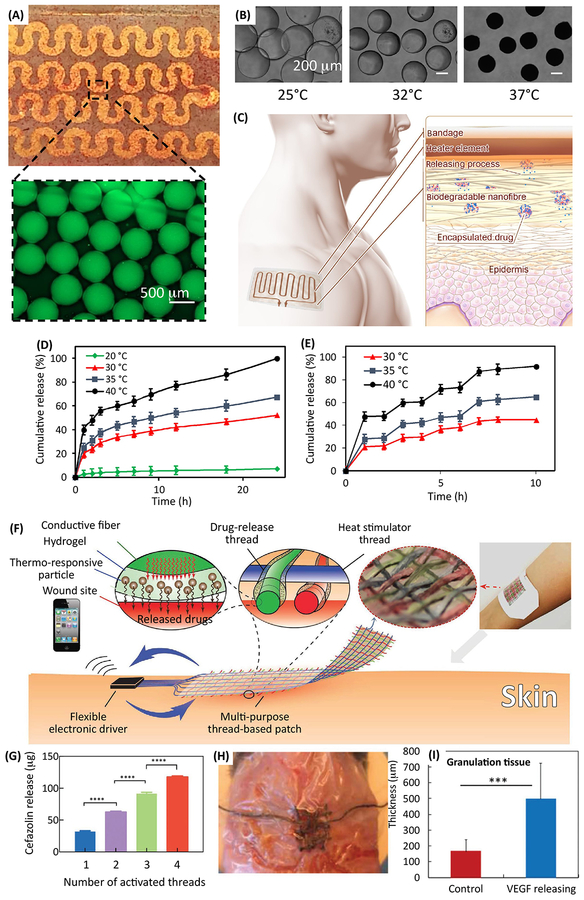Figure 3.
Examples of bandages enabling active control over drug release. (a) Photograph and micrograph of thermoresponsive drug carriers encapsulated in an alginate layer casted on a flexible heater. (b) The response of the engineered thermo-responsive particles to the increase of temperature leading the release of encapsulated compounds. (c) The schematic showing the operation principle of the engineered platform with the integrated heater and electronics. Thermo-responsive drug nanocarriers were encapsulated in nanofibrous mesh fabricated through electrospinning. These particles released their payload in response to temperature increase induced by the integrated flexible heater. (d) The release profile of cefazolin from the nanofibrous mesh at four different temperatures. (e) Effect of temperature on the release rate of ceftriaxone encapsulated within the nanofibrous mesh upon cyclic heating. (f) Schematics of a thread-based patch enabling active control over the release of different drugs. Each fiber consisted of a core heater, coated by a hydrogel layer carrying thermo-responsive particles. (g) The effect of number of activated fibers on cefazolin release from a textile patch. (i) Image of the patch on the wound model. (h,i) A typical fabricated bandage used for releasing VEGF into wounds in diabetic mice. The VEGF delivery improved wound healing rate and tissue granulation. Figures are reproduced with permission from [67], [68], [69].

